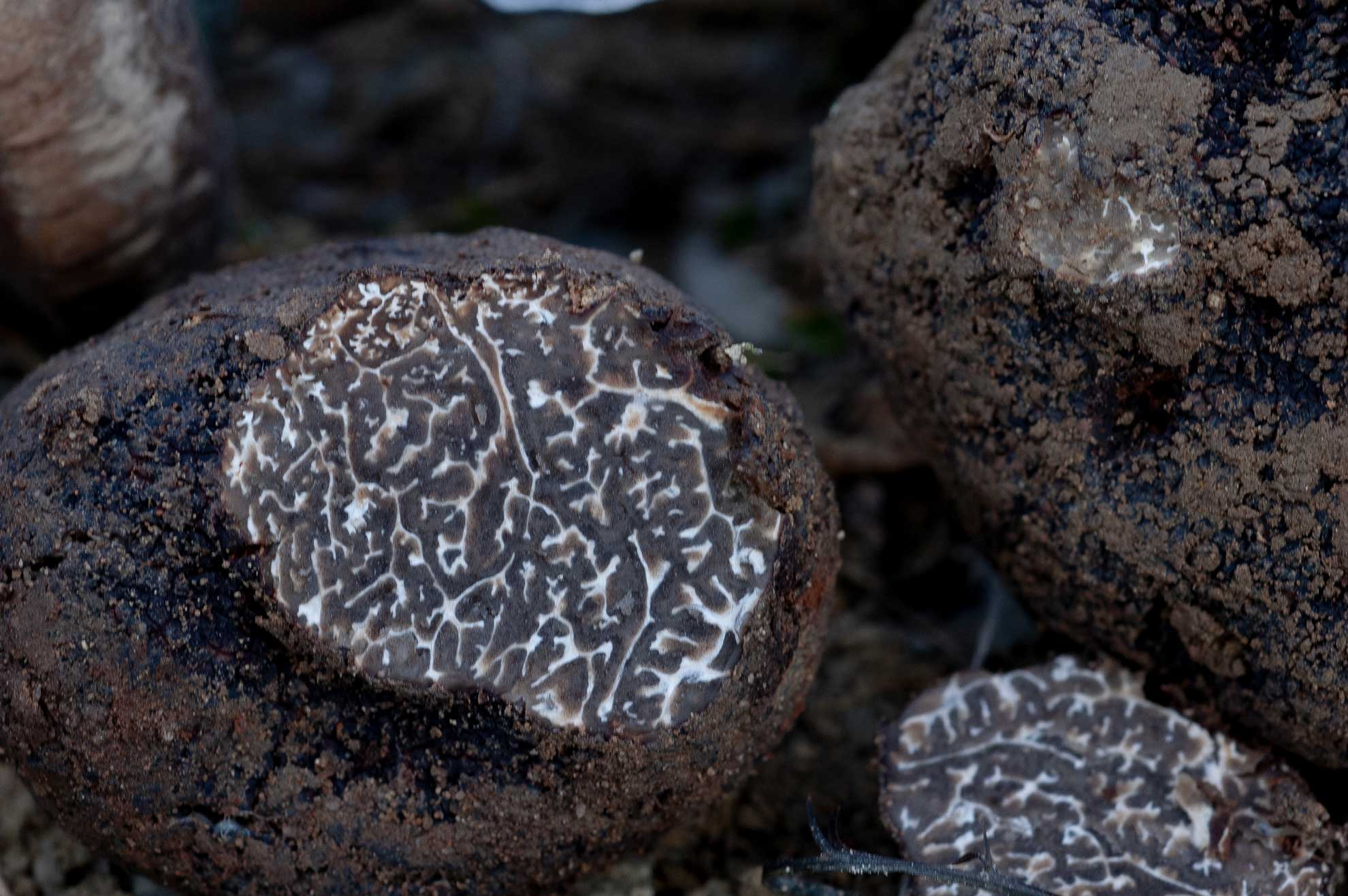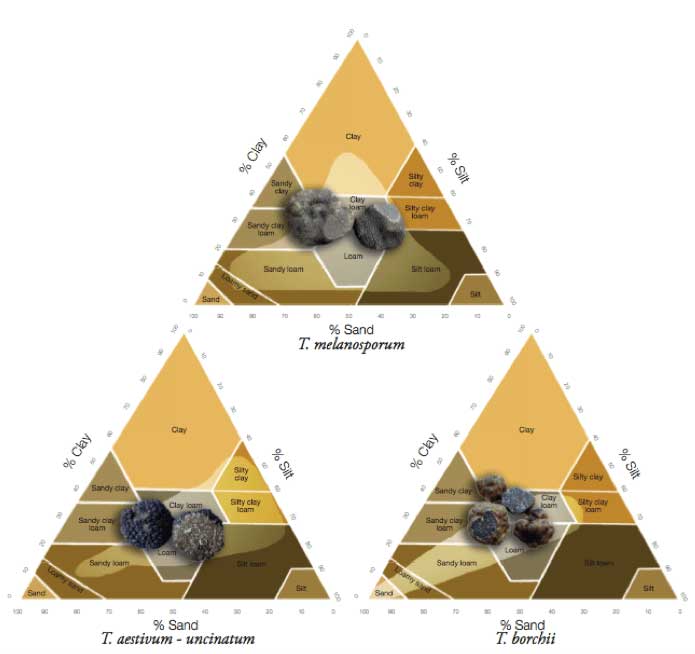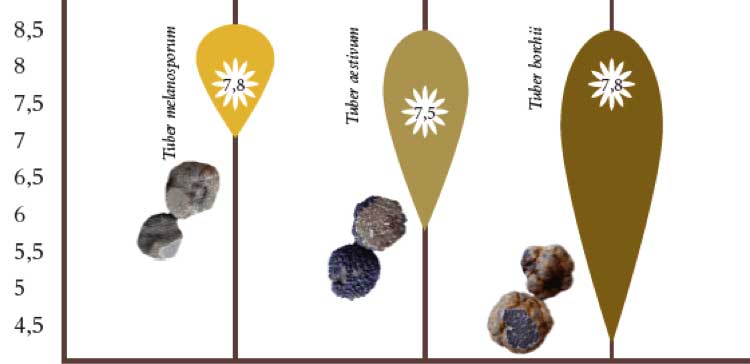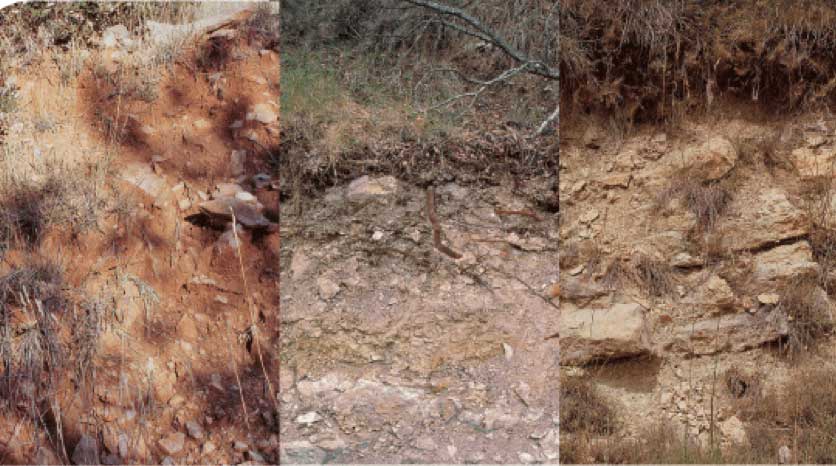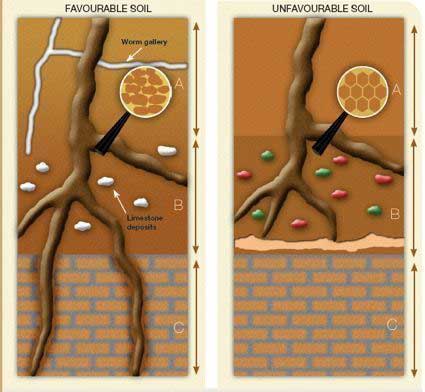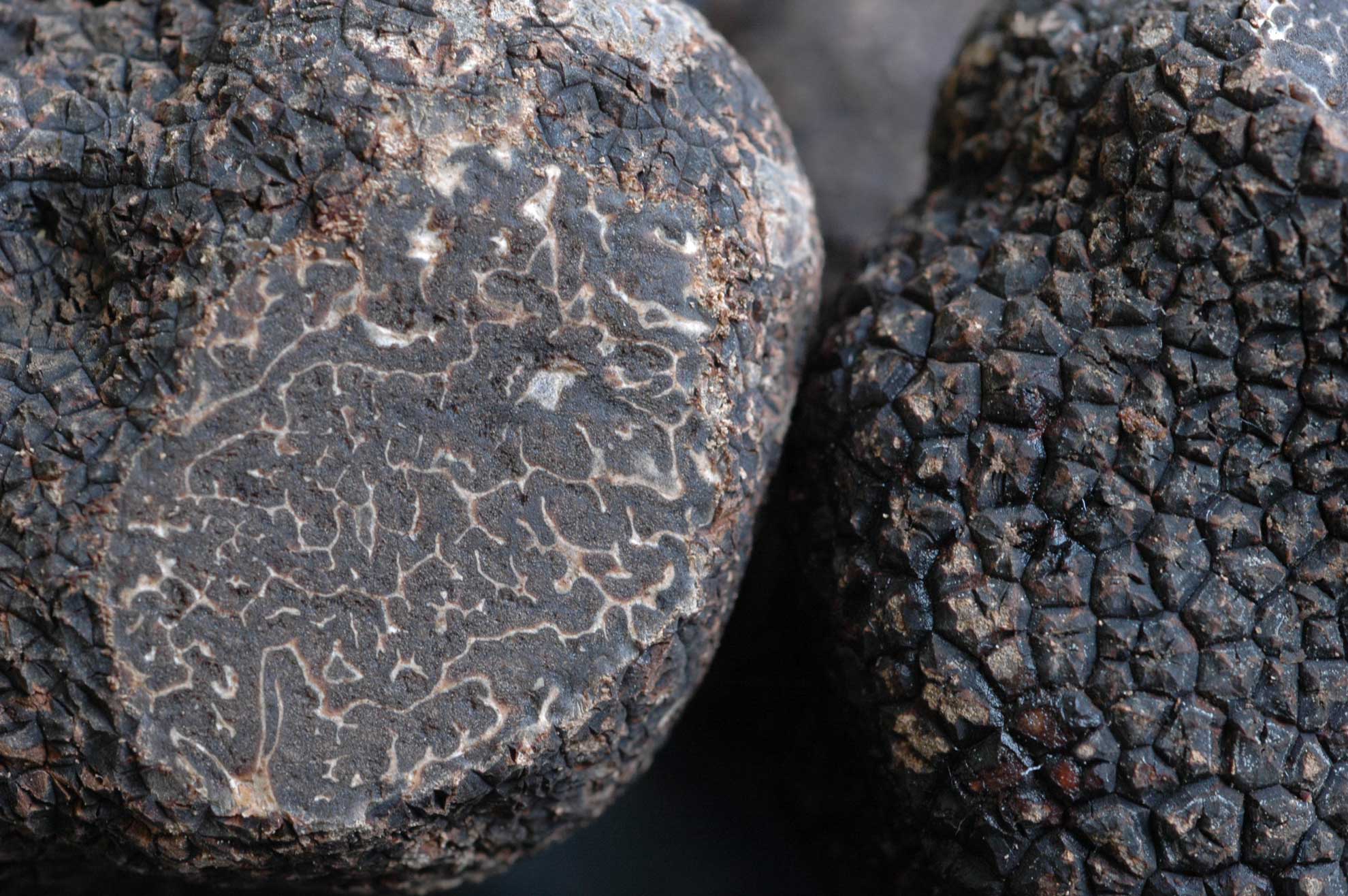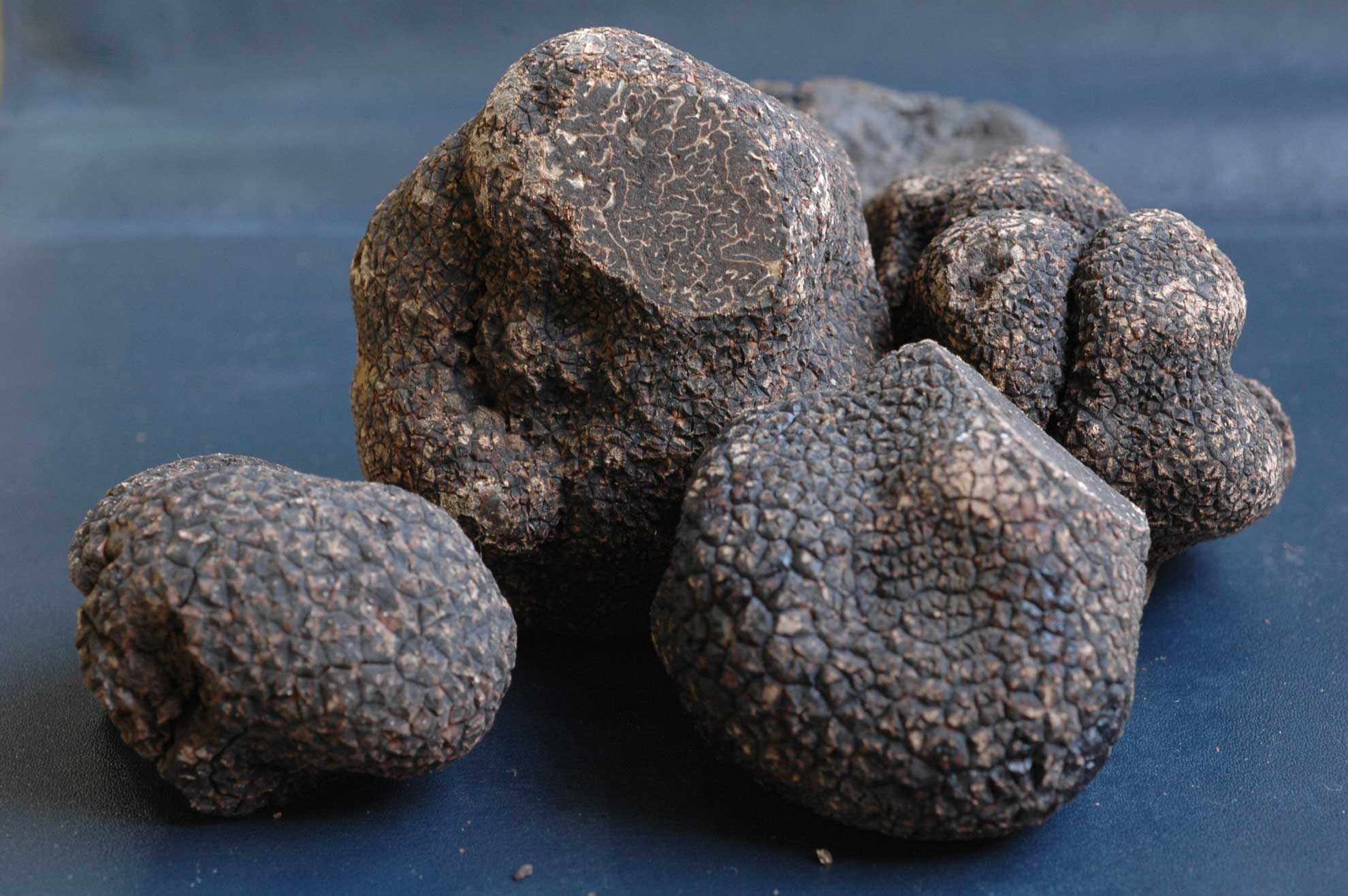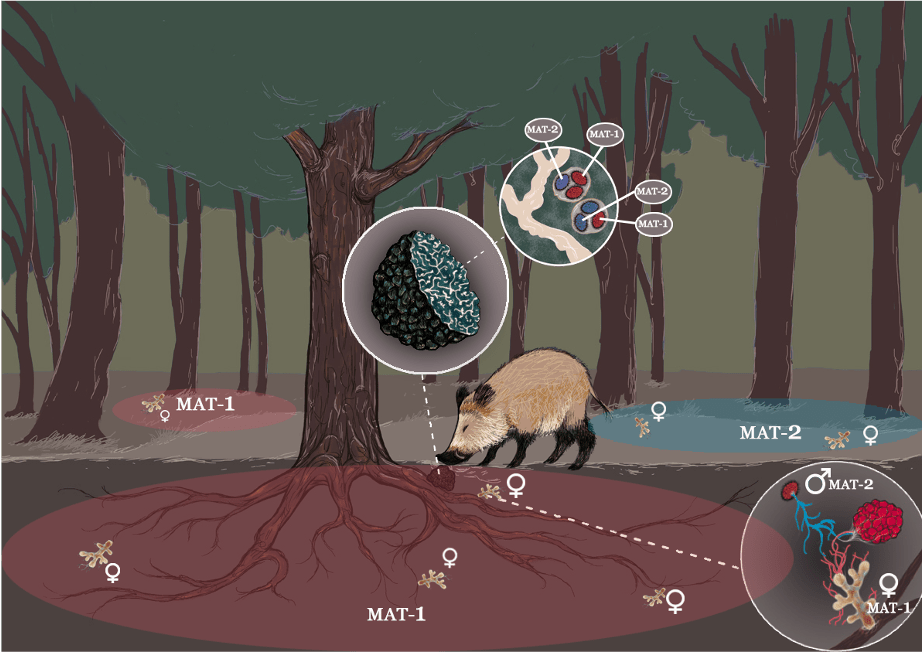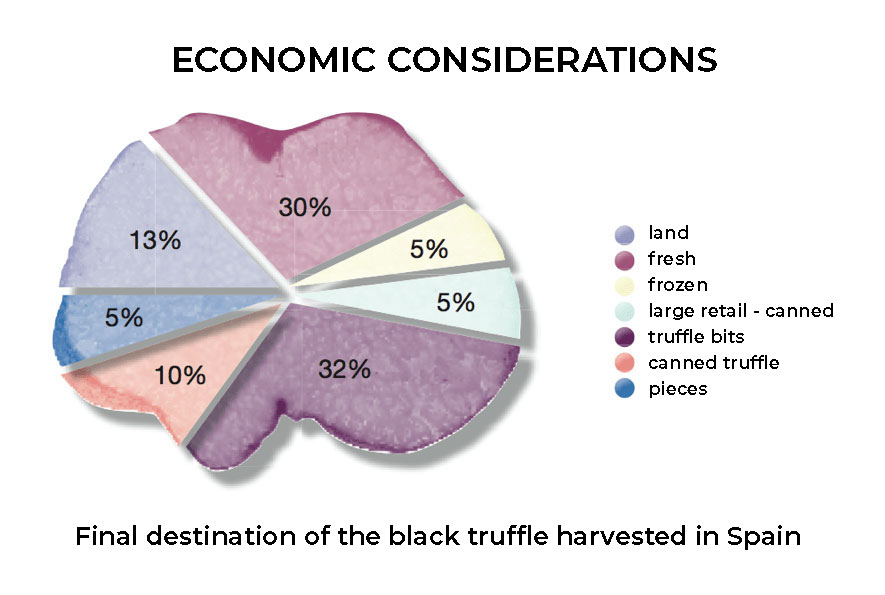Geotextile row cover for weed control and moisture balance; use double-layer (black/white) in warm zones.
Tuber Melanosporum Truffle
Farming Guide
What are truffles and what varieties exist?
Truffles are the fruiting body of a mycorrhizal fungus, meaning they live in symbiosis with the roots of certain trees such as oaks, holm oaks, hazelnuts, some pines, and even shrubs like rockrose. Truffles grow underground, and some species produce an aroma to attract animals that dig them up and spread their spores by eating them. This aroma is also appreciated by humans and recognized by trained dogs used to harvest them.
Truffles belong to the genus Tuber. There are around 40 species, but only a few have real market value, such as the black truffle or Périgord truffle (Tuber melanosporum), the winter truffle (Tuber brumale), the summer truffle (Tuber aestivum) and its autumn cousin, the Burgundy truffle (Tuber aestivum var. uncinatum); the highly valued white truffle (Tuber magnatum), and the less expensive bianchetto (Tuber borchii).
Most of the information in this guide relates to melanosporum, but for more on other truffles, see:
-
Burgundy Truffle (Tuber uncinatum)
-
Bianchetto (Tuber borchii)
-
White Truffle (Tuber magnatum)
Geological Characteristics of Truffle Grounds
Black truffles naturally grow at altitudes between 100 and 1,500 meters above sea level. At higher altitudes, they prefer sunnier exposures. The same goes for latitude—moving north into colder climates, truffles need more direct light, such as south-facing slopes or less canopy cover.
Slightly sloped areas are recommended to avoid waterlogging in flat or valley bottom areas (unless the subsoil has good drainage), and very steep slopes should be avoided due to erosion and the complexity of mechanization.
Black truffles grow naturally in calcareous soils of the Mediterranean region. In Spain, they are mainly found in the eastern half of the country, over geological formations from the Primary, Secondary-Mesozoic (Triassic, Jurassic, Cretaceous), Tertiary, and Quaternary periods, mostly on hard limestones from the Upper Jurassic.


